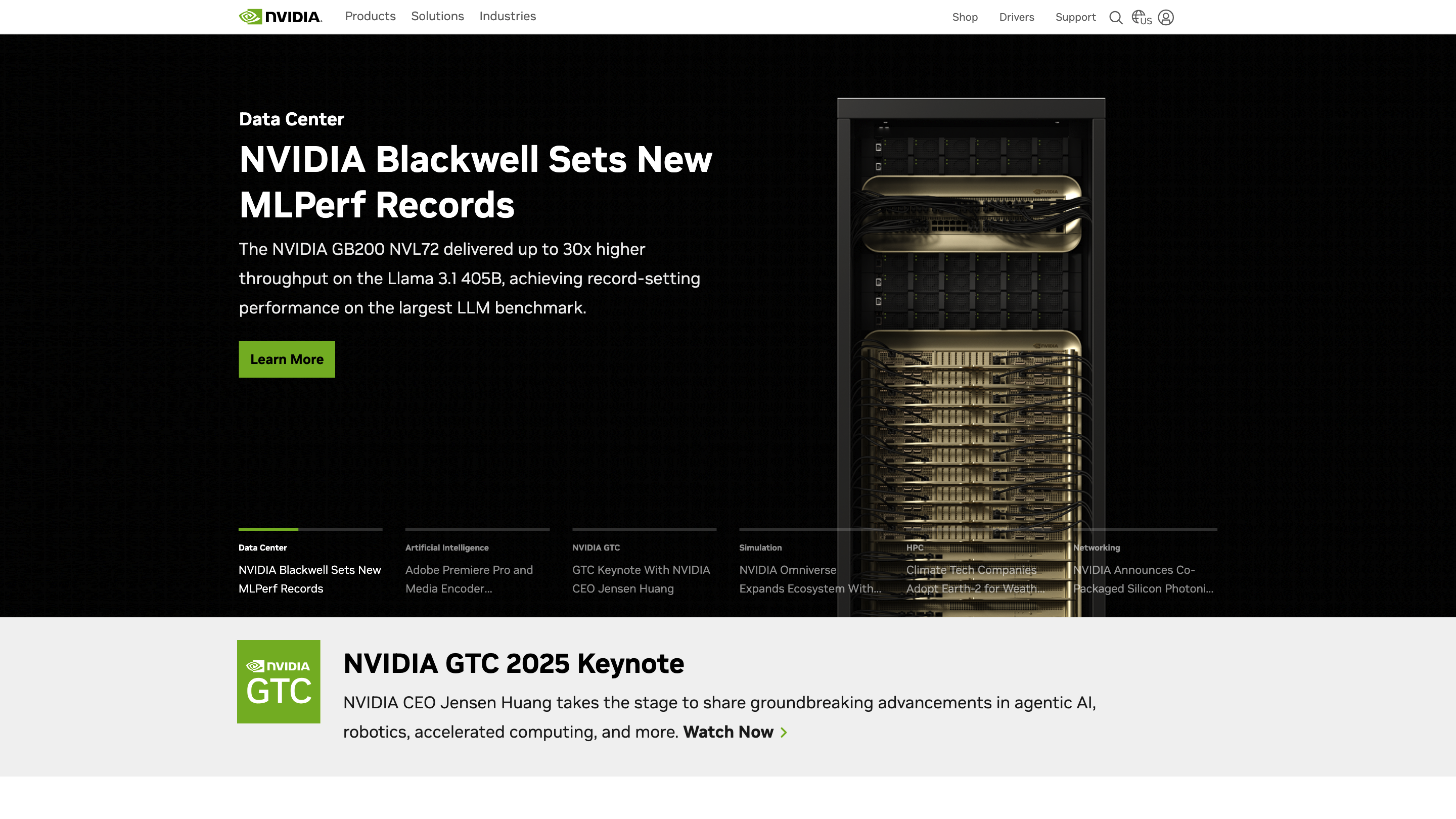Deci
Open siteCoding & Development
Introduction
Empowers developers to accelerate inference and maximize hardware potential.
Deci Product Information
NVIDIA AI Computing Platform Overview
NVIDIA is a world leader in artificial intelligence computing, offering a comprehensive stack that spans hardware, software, and enterprise solutions. The platform enables organizations to accelerate AI research, model development, simulation, and production workloads across data center, cloud, edge, and embedded environments. It combines advanced GPUs, system architectures, and an expansive software ecosystem to support generative AI, perception, robotics, autonomous machines, digital twins, HPC, and immersive visualization.
Key Capabilities
- Scalable AI hardware families for diverse needs (from edge devices to hyperscale data centers), including CPU-GPU architectures, high-performance interconnects, and purpose-built AI accelerators.
- End-to-end software infrastructure for AI development, deployment, and operations, including model frameworks, optimization toolkits, and managed AI platforms.
- Multimodal and foundation-model support with specialized runtimes, libraries, and tooling designed for large-scale inference, training, and reasoning.
- Rich ecosystem for robotics, autonomous machines, simulation, and digital twins (Omniverse, Isaac, Jetson, CUDA-X, cuDNN, TensorRT, and more).
- Enterprise-grade capabilities for AI factory operations, model governance, MLOps, and scalable inference at the edge and in the cloud.
- Dedicated cloud and on-premise offerings (DGX systems, DGX Cloud, DGX POD, DGX personal AI computers) to accelerate AI factories and research labs.
- Industry collaboration and ecosystem partnerships with leading software vendors, automakers, healthcare organizations, and research institutions.
How NVIDIA AI Computing Platform Works
- Deploy high-performance GPUs and AI accelerators across data centers, edges, and embedded devices to accelerate training, inference, and simulation.
- Use CUDA-X libraries and TensorRT to optimize workloads, enable fast model deployment, and achieve low-latency AI at scale.
- Leverage Omniverse and physical AI tools for realistic simulation, digital twins, robotics, and collaborative design.
- Orchestrate AI workflows with enterprise-grade software to manage data, models, and infrastructure, supporting governance, reproducibility, and scale.
Industries and Use Cases
- AI research and development: rapid prototyping, large-model training, and scalable inference.
- Robotics and autonomous systems: perception, control, simulation, and real-time decision-making.
- Automotive and mobility: autonomous driving stacks, safe AI systems, and digital twins for manufacturing.
- Healthcare and life sciences: imaging, diagnostics, and AI-powered discovery.
- Manufacturing and supply chain: digital twins, optimization, and AI-enabled operations.
- Entertainment and media: accelerated rendering, AI-assisted content creation, and immersive workflows.
Safety, Governance, and Privacy
- NVIDIA emphasizes scalable, secure AI workflows with governance, auditability, and enterprise-grade management.
- Solutions are designed to optimize performance while enabling responsible AI deployment across organizations.
Core Features
- End-to-end AI hardware and software stack for training, inference, and simulation
- DGX family and DGX Cloud for scalable AI factories and managed services
- Jetson for edge AI and embedded applications
- Omniverse for real-time simulation and physical AI integration
- CUDA-X libraries, cuDNN, TensorRT, and other performance-optimized toolkits
- NVIDIA NeMo, Clara, and related frameworks for healthcare, robotics, and enterprise AI
- High-performance interconnects and scalable data center architectures (Grace, Blackwell, Hopper, Ada)
- Enterprise MLOps, model governance, and lifecycle management tooling
- Extensive ecosystem of partners, models, and open standards (OpenUSD, Cosmos, Isaac, etc.)
